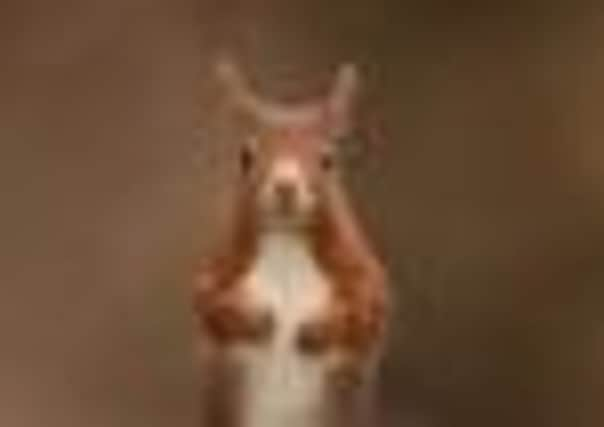VisitScotland campaign to crown most iconic creature


The red deer, golden eagle, harbour seal, otter and red squirrel have been chosen as animal ambassadors for the nation to kick-start the £350,000 drive.
Images of them in spectacular locations around the country are to take centre stage in a high-profile new billboard advertising campaign across the UK.
Advertisement
Hide AdBut the joint drive by VisitScotland and Scottish Natural Heritage is aimed at persuading people to plot their own routes around the country so they can capture them on camera themselves.
A dedicated website for the “Scotland’s Big Five” campaign offers tips for the best time of year, location and kind of habitats in which to spot each creature, as well as character profiles of the five animals - which have also been given nicknames. There is also advice on possible touring routes for the best prospects of seeing all five contenders for the title.
SNH said they had been specifically chosen to spearhead the campaign as they were “high profile species, widely associated with Scotland, with a broad geographical spread and that people stand a good chance of seeing them in the wild.”
Scotland boasts over 80 per cent of the UK population of the red squirrel, which is known as the tufted acrobat, and can most commonly be found in their native Scots pine and oak woodland in the Highlands.
The otter, aka the whiskered diver, can often be seen in freshwater rivers, canals and marshes, as well as in the sea, in particular off Shetland and Dumfries and Galloway.
Britain’s largest land mammal, the red deer, described as the roaring monarch in the campaign, is most commonly seen in hills and remote glens in the summer months, and particularly on islands like Rum and Jura.
Advertisement
Hide AdThe golden eagle, dubbed the high flyer, is often spotted in low-lying moorland, peat bogs and mountains ranges in the Highlands and Northern Isles.
Shetland, Orkney and the east coast of the Outer Hebrides are said to be the best places to spot the curious seadog, the name given to the harbour seal by SNH.
Advertisement
Hide AdVisitors will be urged to post their best pictures online during the campaign, while votes can be cast for their favourites on dedicated “Big 5” websites run by both SNH and VisitScotland.
The venture is one of the most high-profile elements of the “Year of Natural of Scotland” campaign, which is planned to build up to the second Year of Homecoming in 2014. It is billed as the biggest ever celebration of Scotland’s natural beauty, wildlife and wilderness areas.
Ian Jardine, chief executive of SNH, said: “Most people will be aware of the animals selected for the campaign, but many may not have seen them in their natural habitat.
“In Scotland we have a good chance to see these distinctive animals in a wild setting – something that isn’t possible for many people in Europe today. We know that’s why many come to Scotland on holiday.”
Scottish environment minister Paul Wheelhouse said: “Scotland has some of the world’s most outstanding wildlife, with a diverse range of animals and birds that are an integral component of what makes our nation unique.”
At least £5.4 million is being spent on the Year of Natural Scotland, with £3 million coming from VisitScotland and £1 million each from SNH and Creative Scotland. An open fund for arts projects was created last year, with priority given to projects based in or near recognised nature reserves, parks, trails or other beauty spots.
Advertisement
Hide AdA TV advert for the Year of Natural Scotland campaign features gannets on Ailsa Craig, off the Ayrshire coast, red deer on the Isle of Rum, white water rafting in Perthshire and mountain biking in Torridon, in the Highlands.
VisitScotland hopes the entire campaign will generate an extra £68 million for the economy this year.